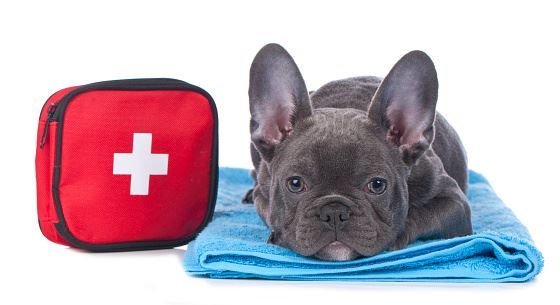
First-aid for pet owners
Our pets constitute a valuable part of our family. For most of us our furry companions are like our babies, and as pet-parents, we want to provide them the best care from making sure our dogs eat healthy (yet affordable) food to keeping them safe and sound. Of course, we try our best to keep our pets safe with First-aid tips, but accidents or emergencies can become unavoidable at times.
In such situations panicking can make matters worse, so the best thing to do is to keep yourself prepared physically as well as mentally to be able to give your pet the required first-aid and take action on time. Here are some useful first-aid tips to help make your pet comfortable; these may prevent things from getting worse in case of an accident.
But before moving forward, I would like to iterate the fact that first-aid is not a replacement to veterinary care. In any case when you suspect an injury rush your pet to the veterinarian and provide first-aid until you can reach the clinic.
Know How to Handle Your Pet
To ensure that your pet is safely transported to the veterinarian it is crucial to understand how to handle him correctly. Improper handling methods may cause anxiety and put you at the risk of getting injured since even the calmest animals can bite due to pain and fear. No matter how desperately you want to, don’t hug your pet and try to keep your face away. Transport the animal in a crate or carrier to prevent any additional injury but make sure it is spacious. For larger dogs use a throw rug or blanket to act as a stretcher.
Keep a First-Aid Kit Prepared
Pet-parents often make the mistake of not keeping a first-aid kit handy even though they have the necessary supplies available. It adds to the panic since you have to run across the house finding gauze, ointment or whatever is needed. Here are a few essential supplies that you must have in your first-aid kit
- Gauze
- Adhesive tape
- Pet antiseptic wipes
- Cotton balls
- Petroleum jelly
- Antiseptic ointment
- Thermometer
- Styptic powder
- Eyewash
Get Assistance from the Professionals
In case of an accident if you can’t assess your pet’s condition or aren’t sure of what measures to take to stabilize your pet’s condition then immediately call up the vet’s clinic and ask for assistance. Explain to them the situation and follow the advice before you can get to the veterinarian.
There are dedicated helplines to help in case of specific emergencies that have professionals available round the clock to provide timely assistance and suggestion.
What to Do In Case Of:
Bleeding
Trauma may result in injuries which can cause your dog to bleed. In case of an external injury apply moderate pressure over the wound using a gauze pad to stop bleeding. If the gauze gets soaked in blood, apply another one over it and continue to apply pressure until you reach the vet.
Poisoning
In case your pet ingests a toxic substance the first-aid depends upon the means of intoxication. Look for what your pet has consumed, find out the packing of the product consumed and call up the poison control center helpline at (888) 426-443.
The toxicologist will inquire about your pet’s age, breed, what and how much of it did he consume and then make a recommendation accordingly. In some cases, you may be asked to induce vomiting so keep 3% hydrogen peroxide and activated charcoal handy.
But don’t make the mistake of inducing vomiting until you are advised to do so as in particular cases this may cause even more damage. For instance, if the poison ingested was a corrosive product such as a cleaning agent, bleach, hydrocarbon or was consumed more than 2 hours ago, inducing vomiting can put your pet’s life in danger.
Burns
Burns can be caused due to a variety of reasons such as dry heat, chemicals, flames or electricity. The visible symptoms include hair loss, reddened skin or swelled skin. If you spot a burn on your pet’s skin, immediately flush it with cold water. In case of a chemical burn also take the packet of toxin along with you to the vet to identify the contents.Heatstroke
Since our furry companions don’t sweat the only mechanism of cooling they depend upon is panting. Exposure to hot temperatures or suffocation due to getting trapped in closed environments such as cars can cause heatstroke.
The significant symptoms include excessive panting, drooling, reddened gums, increased heart rate, etc. If you think that your pup has been a victim of heatstroke, immediately transport him to a space that is air-conditioned or at least has a fan for fresh air.
Splash cool (not cold) water over his body. Keep him hydrated and monitor the temperature so that it drops down to 103.5 F. Rush to the vet once your dog becomes a little stable. So he can be examined for any organ failure or damage.
AUTHOR BIO:
Jenny Perkins is an Animal Behavior Specialist and a passionate writer. She loves to write about the nutrition, health, and care of dogs. She aims at providing tips to dog owners that can help them become better pet parents.
